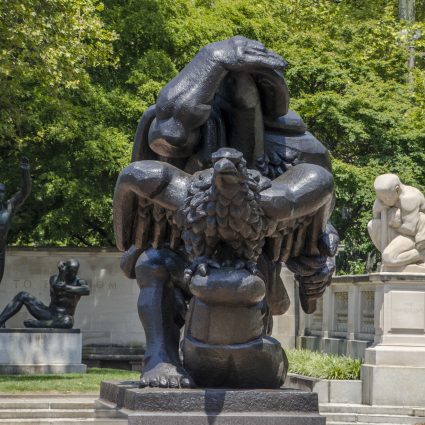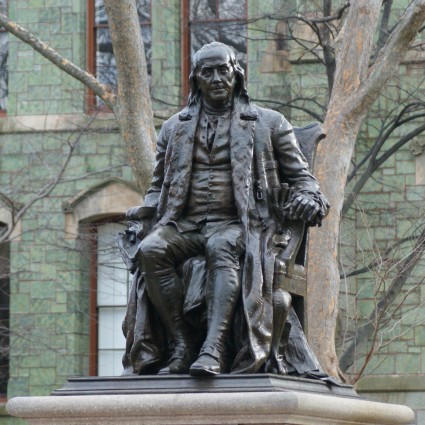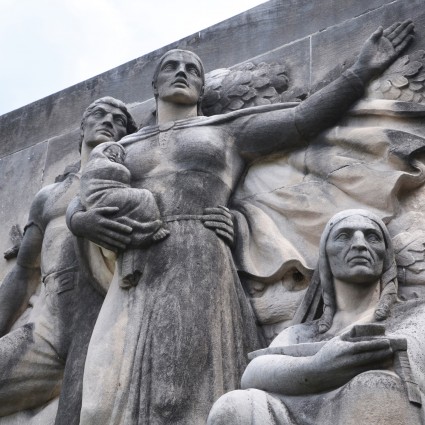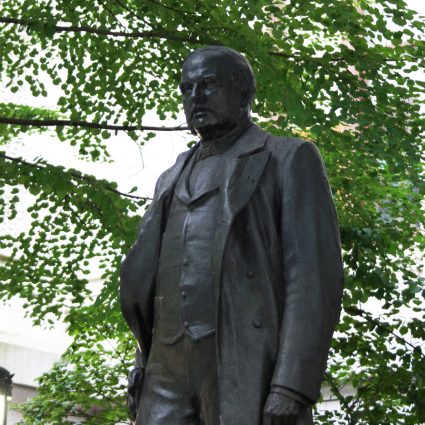At A Glance
Captures a Native American protecting her children from a bear whose cub lies dead at her feet
Boyle was praised as one of the first sculptors to authentically represent Native Americans
Was installed near Sweetbriar Mansion, but relocated in 1985 to a site near the Ellen Phillips Samuel Memorial
John J. Boyle received his first major commission in 1880 – a request from a Chicago patron for a group of American Indian figures. An American Indian Family was exhibited in his studio in Philadelphia before being shipped to Chicago, and it came to the attention of the Fairmount Park Art Association (now the Association for Public Art). The Association confirmed its interest in acquiring an American Indian grouping for Fairmount Park and resolved in 1883 to give Boyle a commission.
You have to look at her threats being governmental and military. The least of her worries would be a bear.
The resulting sculpture, Stone Age in America, received considerable local and national attention. Upon its arrival from France, it was shown at the American Art Association exhibition in New York City. When it arrived in Philadelphia in 1888, it was exhibited at the Haseltine and Company gallery by consent of the Association. It also stood temporarily outside the post office at 9th and Chestnut Streets until it was installed near Sweetbriar Mansion in West Fairmount Park. At the artist’s request, the sculpture was sent to Chicago for exhibition at the World’s Columbian Exposition in 1893, and then it returned to the Sweetbriar Mansion area until 1985, when it was relocated to a grassy plot just south of the Ellen Phillips Samuel Memorial. At its current site, Stone Age in America takes its place with other sculpture “emblematic” of American history.
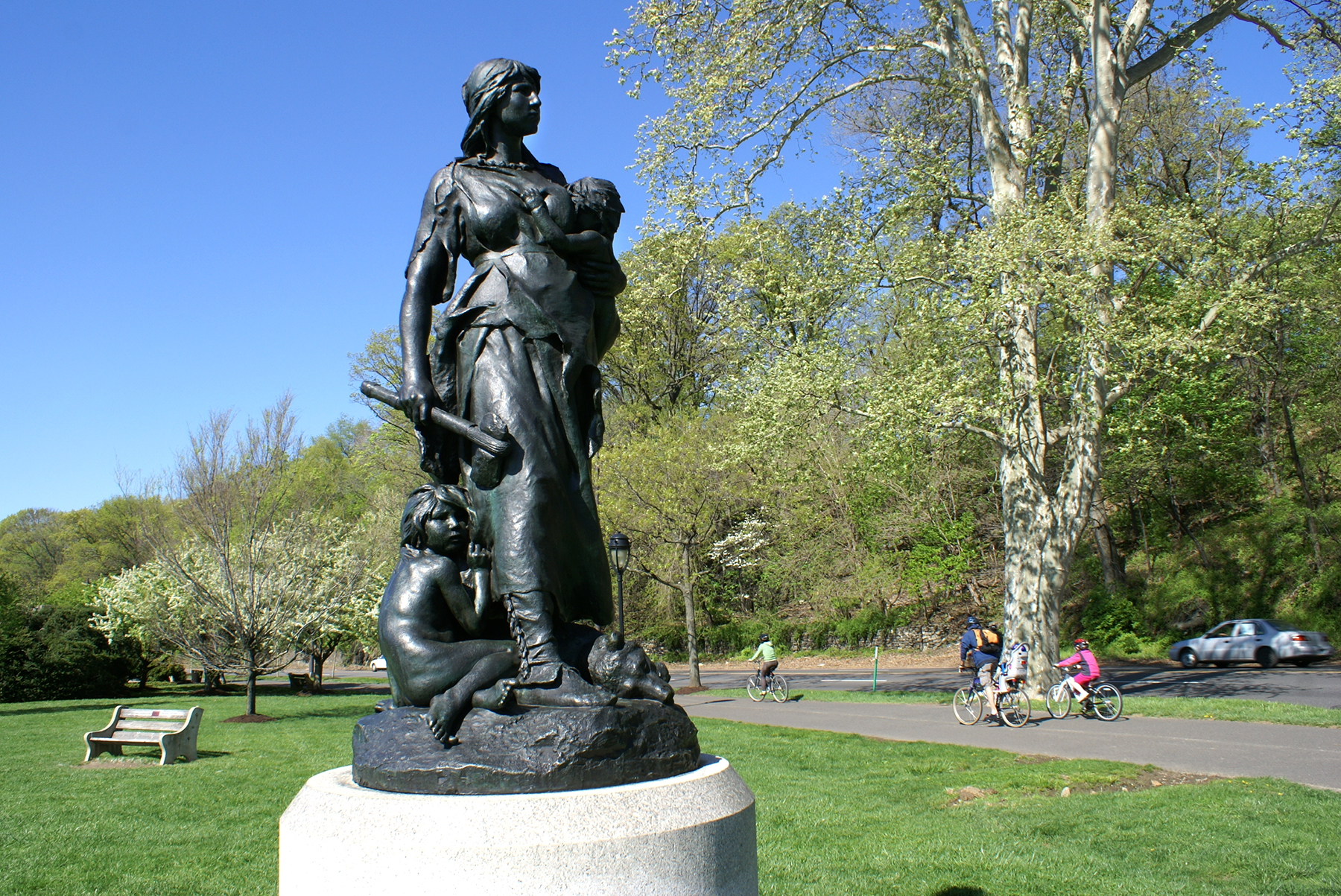
Notably, the sculpture was created the same year as the Dawes Act or General Allotment Act of 1887. The law authorized the U.S. government to confiscate reservation lands and divide them into individual allotments, which was “instrumental in breaking up Native American reservations in this country,” says Hock E Aye Vi Edgar Heap of Birds, artist and professor of Native American Studies at the University of Oklahoma. He notes that if you look closely at Stone Age in America, “you’ll see a bear cub at the Native American woman’s foot, but in effect, you have to look at her threats being governmental and military. The least of her worries would be a bear.” Hear more from Hock E Aye Vi Edgar Heap of Birds in our Museum Without Walls: AUDIO program about the sculpture.
Other works in Philadelphia by John J. Boyle include John Christian Bullitt outside of City Hall, and the seated Benjamin Franklin on the University of Pennsylvania’s campus.
Adapted from Public Art in Philadelphia by Penny Balkin Bach (Temple University Press, Philadelphia, 1992).
Voices heard in the Museum Without Walls: AUDIO program: Hock E Aye Vi Edgar Heap of Birds is an artist and professor of Native American Studies at the University of Oklahoma. Kate Brockman is a sculptor who teaches at the Pennsylvania Academy of the Fine Arts. Dr. Evan Turner (1927-2020) was the Director of the Philadelphia Museum of Art from 1964 to 1978. | Segment Producer: Amanda Aronczyk
Museum Without Walls: AUDIO is the Association for Public Art’s award-winning audio program for Philadelphia’s outdoor sculpture. Available for free by phone, mobile app, or online, the program features more than 150 voices from all walks of life – artists, educators, civic leaders, historians, and those with personal connections to the artworks.
RESOURCES
This artwork is part of the Along Kelly Drive tour
